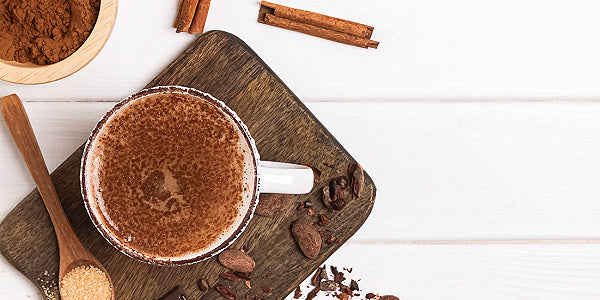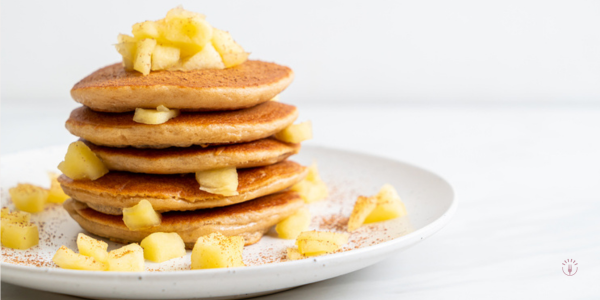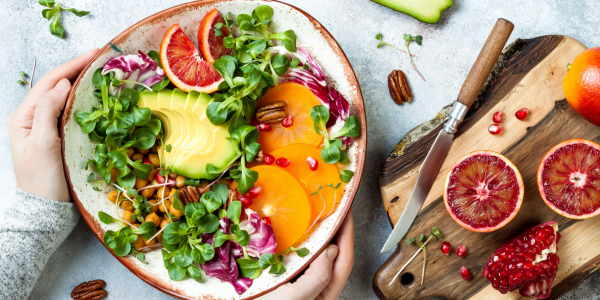
Processed sugar is always making the headlines. Hidden sugar in foods can greatly exceed the daily sugar intake. These hidden sugars hide under the radar while the media gets consumers in an uproar over high sugar fruits.
Read on to find out the truth about processed sugar, sneaky names for sugar, and the six sneaky foods to be worried about.
What Is Processed Sugar?
Sugar lurks in just about everything these days. While sweet tastes are temporarily satisfying, processed sugar is linked to obesity and many other chronic health conditions such as type 2 diabetes.
Transparency is becoming more valued, but some companies are still using sneaky tactics to hide sugar in their "health" products. Unearth hidden sugars by understanding how processed sugars and sweet substances can be masked by manufacturers.
What Is Hidden Sugar?
Hidden sugars are essentially processed sweeteners added to common foods and beverages.
Orange juice is a great example. Oranges and orange juice contain naturally occurring sugar in the form of simple carbohydrates. However, it also can be a source of hidden sugar.
Red flags on the food label include terms like "concentrated" Juices that are not 100% fruit but concentrates instead may be reconstituted with sugar.
This process lowers the nutritional value, particularly as the juiced form of oranges also lacks fiber. Fiber is a key part of the diet as it lowers cholesterol and helps balance blood sugar in the body.
Names for Hidden Sugar
Sugar is commonly incorporated into processed products. The following foods may contain hidden sugars under a different name:
• Breads, pastas, and crackers
• Sweet treats and pastries
• Breakfast cereals
• Fruit juices and smoothies
• Condiments
• Beverages
Being aware of all the names processed sugar can go by is a key part of trading refined sugar for more nutritious alternatives.
How Is Sugar Hidden On Labels?
According to USDA MyPlate, a federal organization that provides insight on dietary patterns, sugar can be hidden using the following names on labels:
• Anhydrous dextrose
• Brown sugar
• Cane juice
• Confectioners powdered sugar
• Corn sweetener
• Corn syrup
• Crystal dextrose
• Dextrose
• Evaporated corn sweetener
• Fructose
• Fruit nectar
• Glucose
• High-fructose corn syrup (HFCS)
• Honey
• Invert sugar
• Lactose
• Liquid fructose
• Malt syrup
• Maltose
• Molasses
• Nectars (e.g., peach or pear nectar)
• Pancake syrup
• Raw sugar
• Sucrose
• Sugar cane juice
• Trehalose
• Turbinado sugar
• White granulated sugar
Another tricky thing that producers do is confuse consumers with "fat-free," "gluten-free," or "plant-based" labels. A dietitian can help decipher which claims (if any) hold up on a nutrition label. Some claims are backed by federal regulations and convey nutritional value while others are simply states void of meaning.
What Foods Have Hidden Sugar In Them?
Manufacturers may be sneaky by hiding sugars in plain sight. Beware of sweeteners marketed as "natural" or "healthy" alternatives. Sometimes, more than one sugar will be spread among an extensive ingredient list to confuse the consumer as well.
Instead of making fear-based decisions, knowing how to avoid high-sugar foods can be an effective health strategy. The following foods can be sneaky, hidden sources of sugar.
1. Soft & Sports Drinks
Soft and sports drinks may have water as the main ingredient. However, they contain copious amounts of sugar and virtually no nutritional value.
In place of key vitamins and minerals, soft drinks supply excessive amounts of sugar, preservatives, and high-fructose corn syrup.
2. Yogurt
According to the Academy of Nutrition and Dietetics, "Added sugar is a common ingredient in fruited and flavored varieties of yogurt." In fact, some flavored yogurt varieties can contain upwards of 20 grams of sugar per serving!
The same sweet flavor can be achieved by homemaking delicious parfaits. Try adding fresh fruit, cinnamon, or pure vanilla extract to plain yogurt.
3. Fruit Juice
Any juice not 100% juice is probably hiding sugar in the ingredient list. Apple, orange, and other juices already lack fiber.
Companies can sneakily blend concentrates and juices without disclosing the entire manufacturing process that makes their juices taste sweeter.
4. Chips
While chips seem to be a savory option and sugar-free, some flavored varieties contain added sugar. To make matters worse, chips are easy to overeat and can lead to excess blood sugar levels.
What's more, sugar and starch are essentially two sides of the same carbohydrate coin. The body receives highly starchy foods in a process similar to how sugar hits the bloodstream.
5. Granola Bars
With names like "Nutri-Grain," it would be hard to guess a granola bar could cause a blood sugar spike. Granola bars can hide sugars under sneaky names like "rice syrup" or "fruit nectar."
Check the label before buying to see how much sugar (especially added sugars) each bar contains.
6. Protein & Snack Bars
Like granola bars, protein and snack bars sometimes still be enough to send someone into a "sugar coma." They often contain more sugar, not to mention they also commonly contain more fat than any other sweet snack available on the market.
Indulging every once in a while is certainly okay. However, even those "snack size" items are seldom eaten alone.
7. Salad Dressings
After reading the nutrition label of store-bought salad dressing, you will likely realize a lot of the ingredients are undesirable and unrecognizable. Many bottled dressings contain hidden sugar, as well as sodium and not-so-healthy oils.
One of the best ways to control the sugar content and enjoy a nutritious salad is by making a homemade dressing. Fortunately, we have 10 salad dressing recipes to get you started!
8. Condiments
Condiments might not be the main fixture of a meal but even a little can go a long way in terms of added sugar. In fact, just one tablespoon of ketchup contains about four grams of sugar! (And not many stick to just one tablespoon.) Other condiments to be wary of include hot sauce, BBQ sauce, honey mustard, relish, and salsa.
Rather than dowsing meals with condiments, stick to a recommended serving or find products with limited added sugar. Also offer natural flavor and gain health benefits with DIY spice and seasoning mixes.
9. Marinara and Pasta Sauces
Tomatoes contain natural sugars but when added to both condiments and sauces, hidden sugar beware. Sugar is often used to cut the acidity of the tomatoes but some products might be chockfull of the sweet stuff.
To lower added sugar consumption, look for products without added sugar or at least limited added sugar. Or, consider making a homemade tomato sauce for the ultimate ingredient control.
10. "Diet" Packaged Foods
As mentioned above, sugar can be added/hidden in a variety of "diet" foods. Whether gluten-free, vegan, whathaveyou, such packaged products appear healthy but might lack any sort of nutritional value.
For instance, cookies can be prepared with gluten-free and vegan ingredients. Since sugar is naturally devoid of gluten and vegan-friendly, it can still fit the mold.
The Final Word On Finding Hidden Sugars
Processed sugar lurks in many places. Masked by manufacturers using sneaky names, there are many top foods where hidden sugars lie like the ones listed above.
Learning more about refined sugar and labeling regulations can help one discover how to swap sugar for something even sweeter for their health in the long term.
References:
Ellis E. Hard Facts about Soft Drinks. EatRight. Published December 7, 2018. https://www.eatright.org/food/nutrition/nutrition-facts-and-food-labels/hard-facts-about-soft-drinks.
Ellis E. What to Look for in Yogurt. EatRight. Published February 3, 2021. https://www.eatright.org/food/nutrition/healthy-eating/what-to-look-for-in-yogurt.
Gager E. Finding the Hidden Sugar in the Foods You Eat. Johns Hopkins Medicine. https://www.hopkinsmedicine.org/health/wellness-and-prevention/finding-the-hidden-sugar-in-the-foods-you-eat.
Gordon B. The Scoop on Added Sugars. EatRight. Published November 21, 2019. https://www.eatright.org/food/nutrition/nutrition-facts-and-food-labels/the-scoop-on-added-sugars.







